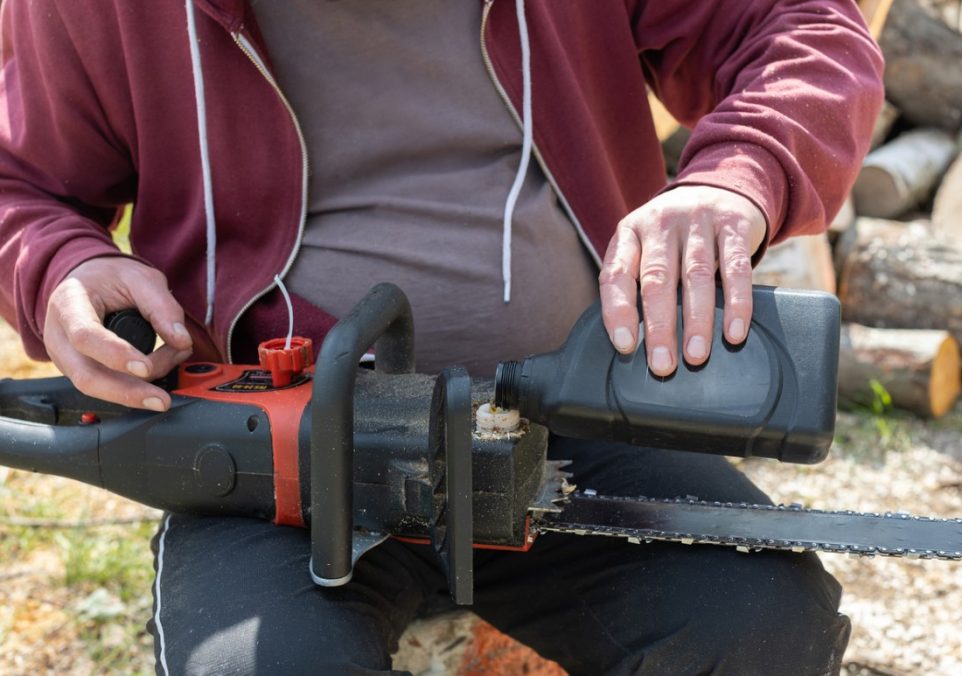Chainsaw Oiling: How to Oil a Gas or Electric Chainsaw Safely

When it comes to maintaining your chainsaw, proper oiling is non-negotiable. Whether you’re a weekend warrior tackling yard work or a seasoned professional felling trees, keeping your chainsaw well-oiled ensures it runs smoothly and efficiently. Not only does this practice extend the life of your tool, but it also enhances safety during operation. But how exactly do you go about oiling a gas or electric chainsaw? And why should you care?
In this guide, we’ll walk you through everything you need to know about chainsaw oiling: from choosing the right type of oil to safely applying it to your chainsaw. We’ll focus on both gas and electric models, offering practical advice that’s easy to follow, even if you’re not particularly handy. Whether you’re new to chainsaw maintenance or just looking to brush up on the basics, this guide will help you keep your chainsaw in top shape.
Why Chainsaw Oiling Is Important
Before diving into the step-by-step process, it’s crucial to understand why chainsaw oiling is so important. Chainsaws, whether gas or electric, operate under intense conditions. The chain spins rapidly around the bar, cutting through wood with each pass. This action generates a lot of friction, which can quickly wear down both the chain and the bar if they aren’t properly lubricated. Oiling reduces this friction, keeping the chain moving smoothly and preventing overheating, which can lead to significant damage over time.
For gas chainsaws, oiling is particularly critical because these machines are generally used for heavy-duty tasks. The powerful engine creates more heat and friction, meaning that without proper lubrication, parts can wear out faster. Electric chainsaws, while typically less powerful, still require regular oiling. Their quieter, more eco-friendly operation doesn’t mean they’re immune to wear and tear. Neglecting to oil your chainsaw can lead to inefficient cutting and potentially dangerous situations, such as the chain snapping or the motor burning out.
How to Oil a Gas Chainsaw
Oiling a gas chainsaw involves a few straightforward steps, but it’s essential to get them right to ensure your tool’s longevity.
Step 1: Start by locating the oil reservoir on your chainsaw. This is usually near the front or side of the chainsaw, depending on the model. Open the cap and check the oil level. If it’s low, it’s time to add more oil. Always use bar and chain oil specifically designed for chainsaws, as this type of oil has additives that reduce wear and protect against rust.
Step 2: Slowly pour the oil into the reservoir, taking care not to overfill. Overfilling can lead to leaks, which not only waste oil but can also create a slipping hazard. After filling, replace the cap securely to avoid spills.
Step 3: Some older gas chainsaws may require manual oiling. If your chainsaw has a manual oiler, you’ll need to press the oil pump periodically while using the chainsaw. This action ensures that oil is being applied to the chain and bar as you work.
Step 4: After filling the reservoir and before starting any cutting, it’s wise to test the oiling system. Run the chainsaw at full throttle while pointing the bar towards a clean surface, like a piece of cardboard. You should see a fine mist of oil appearing on the surface, indicating that the system is working correctly.
How to Oil an Electric Chainsaw
Electric chainsaws are popular for their ease of use and lower maintenance needs, but they still require proper oiling to function well.
Step 1: Electric chainsaws have an oil cap similar to gas models, usually on the side or front of the unit. Check the level of the oil in the reservoir before you start using the chainsaw.
Step 2: Carefully add bar and chain oil to the reservoir, just as you would with a gas chainsaw. Be mindful of the fill line to avoid overfilling. Once filled, securely tighten the oil cap.
Step 3: Most modern electric chainsaws feature an automatic oiling system, which continuously lubricates the chain and bar as you use the tool. This system simplifies maintenance, but it’s still important to ensure that the oil is being properly distributed. Like with gas chainsaws, you can test this by running the chainsaw and checking for oil mist on a clean surface.
Step 4: Regularly inspect the oiling mechanism and keep it free from debris. Sawdust and grime can clog the oiling ports, leading to inadequate lubrication. A simple brush and occasional wipe-down can prevent these clogs from forming.
Maintaining Your Chainsaw’s Oiling System
Proper oiling is just one part of chainsaw maintenance. To keep your chainsaw performing at its best, you should also focus on maintaining the oiling system itself. Over time, oil ports can become clogged with sawdust and dirt, which can impede the flow of oil to the chain and bar.
Turn off and unplug your chainsaw before starting any maintenance. Remove the chain and bar to access the oil ports. Use a small brush or compressed air to clean out any debris that may have accumulated. This simple step can prevent more serious issues down the line.
For gas chainsaws, it’s a good idea to change the oil regularly, especially if you use your chainsaw frequently. Old oil can break down and lose its effectiveness, leading to increased wear on the chain and bar.
When you’re not using your chainsaw, store it in a clean, dry place. This prevents dust and moisture from getting into the oiling system and causing blockages or corrosion.